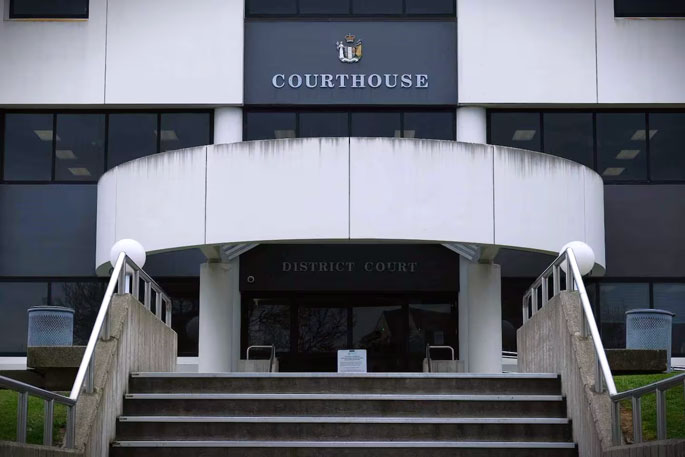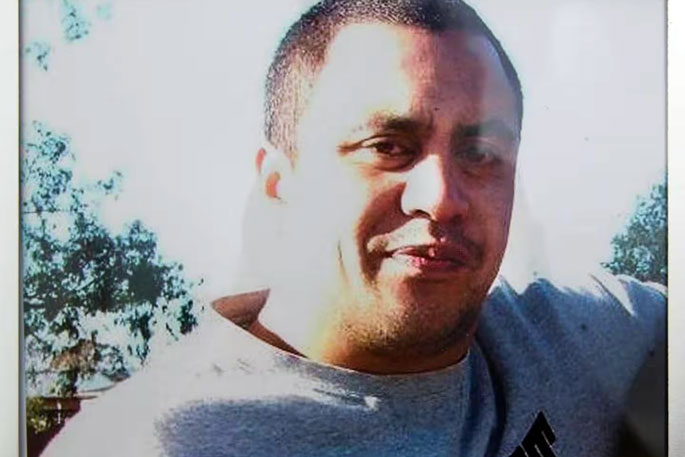“One shot would have been plenty.”
These were the words of a lawyer representing the family of Shargin Stephens at the inquest into Stephens’ death. He was shot twice by police in Rotorua in 2016.
Appearing on behalf of the Stephens family, Charl Hirschfeld said the second shot was “unnecessary” and the officer who fired did not know what bullets were in his rifle.
Coroner Michael Robb began hearing from expert witnesses at the continuing inquest in Hamilton District Court on Monday.
Four members of Stephens’ family were present in the public gallery.
The circumstances surrounding Shargin Stephens’ death
Stephens, 35, was Tasered, pepper-sprayed then shot twice near Redwood Shopping Centre in Te Ngae on July 14, 2016, after he threatened police and members of the public with a long-handled thrasher, it has been previously reported.
He died 12 days later in Waikato Hospital.
An Independent Police Conduct Authority (IPCA) report on Stephens’ death released in 2017 found Stephens’ shooting was “legally justified” in “defence of [the officer] and members of the public”.
Issues with the 2017 report raised by Stephens’ family and in the media, however, prompted a review of the authority’s investigation.
A second IPCA report, released in 2022, found “unreasonable and oppressive” bail checks on Stephens by police may have contributed to his actions on the day of his death.
In the 2022 report, the authority recommended police make changes to the bail-monitoring regime.
Coroner Robb began the inquest at Rotorua’s coronial offices in November.
When the inquest adjourned on November 29, Coroner Robb indicated he hoped to issue a preliminary finding of fact to assist lawyers in preparing the evidence of remaining witnesses.
This preliminary finding was made on August 23.
Coroner Robb said the officer who shot Stephens, referred to as Officer L05, had predetermined he would shoot Stephens if he did not drop the slasher, RNZ reported.
The 148-page report cannot be reported in full until after the coroner has heard from experts in the case and makes a final finding.
All police officers involved in the inquest have name suppression.
Inquest resumes in Hamilton
Superintendent Dion Bennett gave evidence as an expert on the police’s tactical options at the inquest on Monday, based on the coroner’s factual findings.
Reading from his brief of evidence, Bennett said he agreed with Coroner Robb’s finding that an officer’s earlier use of the 10-10 emergency code call “set” the urgency of the police response on the day of the shooting.
“A 10-10 is reserved for situations requiring the most urgent response by police listening to that transmission to support the caller.”
Bennett said examples of 10-10 call situations included an officer being assaulted, a unit being involved in a crash, or the public being in danger from an armed offender.
“A 10-10 call is not a tactical plan. Each officer must make their own assessment of the situation when they arrive,” Bennett said.
In his brief of evidence, Bennett disagreed with the coroner’s preliminary finding that Stephens did not set out to harm anyone on the day he was shot.
“I would describe him as acting in a violent and unpredictable way,” Bennett said.
Hirschfeld, the counsel for the Stephens family, said L05 did not understand the ammunition in his M4 bushmaster rifle was hollowpoint bullets.
“I would have expected him to know that,” Bennett said.
Referring to the way hollowpoint bullets explode inside a soft target, Hirschfeld suggested that “one shot would have been plenty”.
In response to Hirscfeld alleging that the second shot fired by L05 was unnecessary, Bennett replied: “Incapacitation doesn’t always occur immediately”.
 The Hamilton District Court courthouse. Photo / Maryana Garcia.
The Hamilton District Court courthouse. Photo / Maryana Garcia.
Hirschfeld said the firing range of the M4 meant L05 had the opportunity to keep his distance from Stephens but “he elected not to”.
“I accept that was the scenario,” Bennett said.
Asked by Hirschfeld if senior officers should have taken more control over the situation, Bennett responded: “That responsibility does not just sit with the senior officer. It sits with all of us. It sits with all the police in that instance.”
Appearing for officer L05, Susan Hughes KC asked Bennett if it was appropriate that L05 armed himself with the rifle.
“It was appropriate,” Bennett said.
“It’s not a given that the first shot will do the job, is it?” Hughes said.
“That’s correct.”
Coroner Robb asked Bennett whether it would have been beneficial for officers to “slow down” the situation so that police could take more control.
“The person who dictates that is the subject. In this case it was Mr Stephens,” Bennett said.
“If he is moving, police are moving with him. If he’s stopped, police stop with him.”
“Or should?” Coroner Robb asked.
“Or should,” Bennett answered.



0 comments
Leave a Comment
You must be logged in to make a comment.